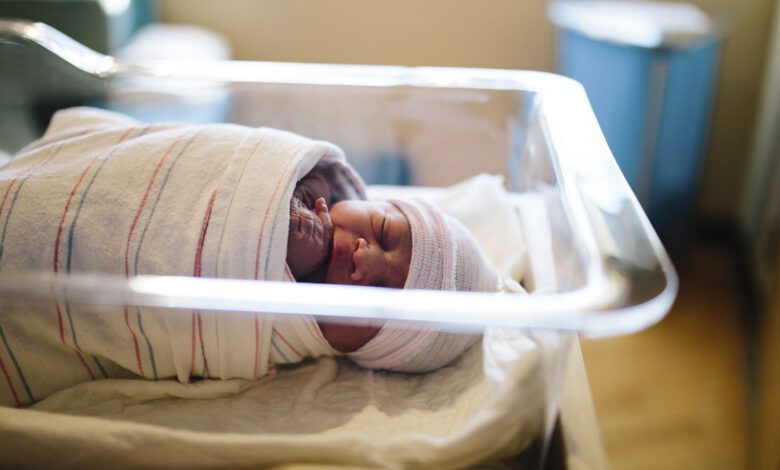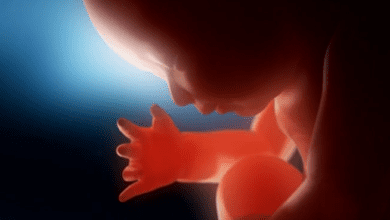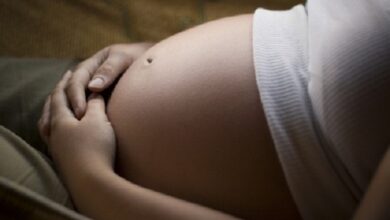Study claims pro-life state protections for preborn children have led to 32,000 more births

Pro-life laws may have resulted in an estimated 32,000 additional annual births during the first six months of 2023, claims a new study published by the Institute of Labor Economics — meaning these are lives that might otherwise have been lost to abortion.
The research claimed that:
- In the first six months of 2023, births rose by an average of 2.3 percent in states enforcing [complete protections for preborn children] compared to a control group of states where [the killing of preborn children] remain protected.
- […] roughly one-fifth to one-fourth of people seeking abortions did not receive them due to [pro-life state protections].
- […] researchers estimated that the [pro-life] laws caused around 32,000 annual births, based on the first six months of 2023.
The studyentitled “The Effects of the Dobbs Decision on Fertility,” claimed to “primarily rely on CDC Wonder data (Centers for Disease Control and Prevention, National Center for Health Statistics, 2022, 2023), accessed on November 6, 2023, for monthly births by state of residence covering the period January 2005 through June 2023.”
The research was then reviewed by the New York Times in the article, “How Many Abortions Did the Post-Roe Bans Prevent?” where the normally pro-abortion media outlet described the research as “The first data on births since Roe v. Wade was overturned” and claimed that it showed “how many abortion bans have had their intended effect: Births increased in every state with a ban.”
“Until now, studies have shown that many women in states with bans have ended their pregnancies anyway, by traveling to other states or ordering pills online. What they have been unable to show is how many women have not done so, and carried their pregnancies to term,” the Times wrote.
NYTs attributes pro-life laws (abortion bans) to saving 32K babies from abortion
While this research is encouraging, Live Action News has previously analyzed estimated abortion numbers which showed dramatic decreases in abortions during the initial months following the Dobbs decision. But more recent abortion estimates tragically revealed that the further away from the Dobbs decision, the slimmer the abortion decreases became.
What Did the Study on Births Post-Dobbs Find?
“The US Supreme Court decision in Dobbs v. Jackson Women’s Health Organization sparked the most profound transformation of the landscape of abortion access in 50 years,” the researchers wrote. “We provide the first estimates of the effects of this decision on fertility using a preregistered synthetic difference-in-differences design applied to newly released provisional natality data for the first half of 2023.”
“Our primary analysis indicates that in the first six months of 2023, births rose by an average of 2.3 percent in states enforcing total abortion bans compared to a control group of states where abortion rights remained protected, amounting to approximately 32,000 additional annual births resulting from abortion bans,” the study found. “These effects vary across demographic groups and tend to be larger for younger women and women of color.”
This demographic was described by the New York Times as “the… groups that have tended to be more likely to seek abortions,” which is true, as Live Action News has noted.
“These effects also vary substantially across ban states, with much larger effects observed in states that are bordered by other ban states and hence have long travel distances to reach facilities that remain open,” the study also claimed.
“As of November 1, 2023, 14 states are enforcing bans on abortion in nearly all circumstances, and 23 percent of US women of reproductive age have experienced an increase in driving distance to the nearest abortion facility, from an average of 43 miles one- way before Dobbs to 330 miles and present (Myers et al., 2023). This represents the most profound transformation of the landscape of US abortion access in 50 years,” the researchers claimed.
Distance to Abortion Facility May Impact Births
The effects of pro-life laws resulting in birth rates increasing were reportedly “especially large for Hispanic women (4.7 percent) and women aged 20-24 (3.3 percent). The estimated increases were larger in states such as Mississippi (4.4 percent) and Texas (5.1 percent), where the geography of bans renders interstate travel more costly.”
We know that, for decades, abortion — which is tethered to eugenics — has been disproportionately targeted Black Americans and other minorities, so it is no surprise that this study also seems to support what was documented prior to the Roe v. Wade Supreme Court ruling: that distance to abortion facilities and legality impact a women’s decision to obtain an abortion — especially minority women.
According to research cited in the documentary film Sorry21:
In 1973, the year abortion was legalized nationwide, Dr. Christopher Tietze produced a study on abortion demographics at the request of the Population Council, a New York-based eugenics organization. In this report, Tietze confirmed previous research showing that, when abortion is illegal, the abortion rate is much higher for white women than for black women, but that this completely reverses whenever abortion is legalized.
At the time he published these findings, Tietze was a consultant to both Planned Parenthood and the National Abortion Federation.
More recently, as Live Action News previously documented, research published in 2020 confirmed what Big Abortion already knew: “Increased distance to a provider was associated with a decreased abortion rate.”
Study Bias?
This statement is perhaps one indication of the bias of the study: “If the past foretells our present, the Dobbs decision will result in increases in unintended births and exacerbate economic inequality. The ability to control fertility has been associated with 40 decades of women’s economic advancement,” the researchers claimed. “In turn, access to legal abortion improved women’s health and increased women’s educational attainment, labor force participation, occupation prestige, and earnings.”
But attributing the success of women to abortion (the violent act of killing one’s own offspring in the womb) is a red herring, as 240 female legal scholars and professionals previously pointed out in their Amicus brief during the Dobbs v. Jackson Women’s Health Organization Supreme Court case. They wrote that they “reject the argument that the ‘ability of women to participate equally in the economic and social life of the Nation’ requires the availability of abortion.”
Study Data Preliminary and Caution Recommended
Institute of Labor Economics researchers urged caution about the data, writing that “These analyzes are based on provisional data for the first six months of 2023. Future changes to the landscape of bans, medication abortion access, and unintended pregnancy rates could further mediate the effects of bans….”
“While these trends suggest that interstate travel and self-management of abortion may blunt the ultimate impacts of abortion bans on fertility, the question of the ultimate effect of bans on births has been unresolved,” the study warned.
“The data on births is preliminary,” also claimed the New York Times, which stated that “A fuller accounting of the effect of Dobbs on the fertility rate, including county-level data, will not be available for another year. The researchers can’t be certain that the increase in births is attributed to women who wanted abortions but couldn’t get them, but the timing and consistency of the results suggest so.”






